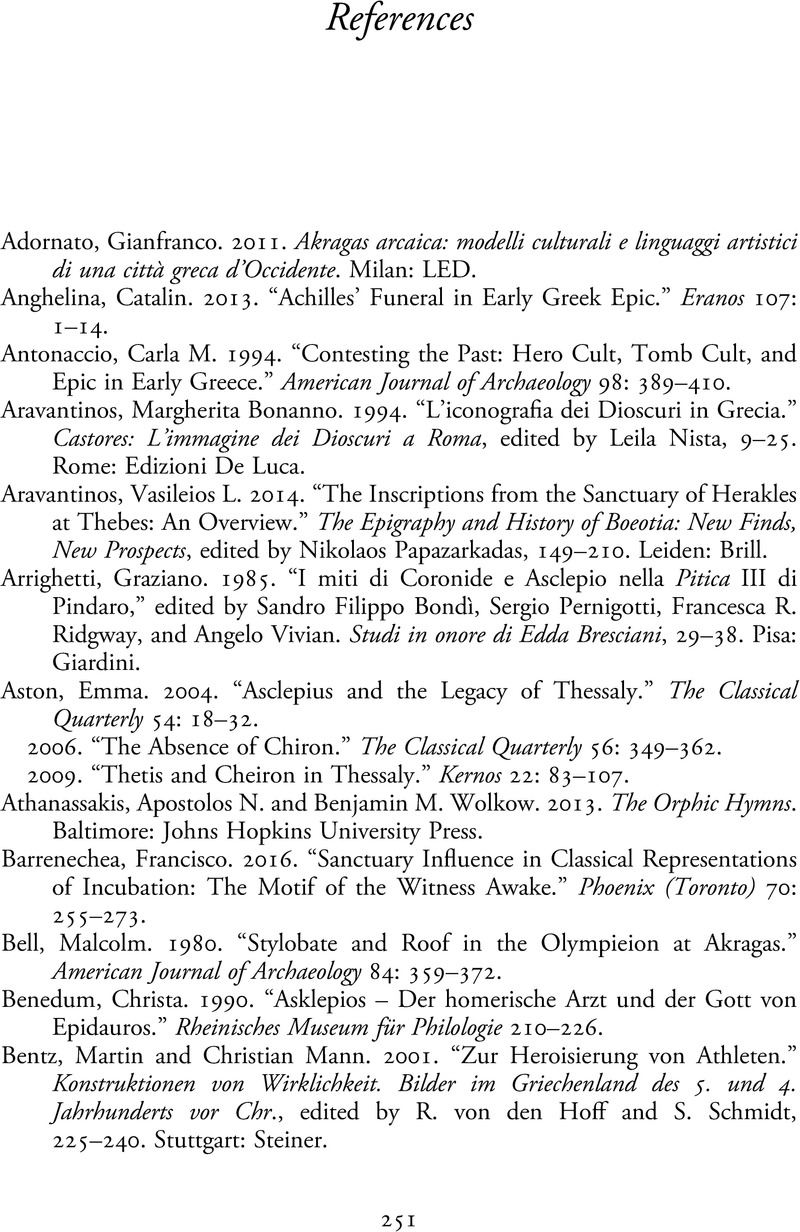Book contents
- Pindar and Greek Religion
- Pindar and Greek Religion
- Copyright page
- Dedication
- Contents
- Figures
- Acknowledgments
- Editions, Abbreviations, and Frequent References
- Chapter 1 Pindar Mythologus and Theologus
- Chapter 2 Herakles Looks Back at the World
- Chapter 3 The Dioskouroi in Existential Crisis
- Chapter 4 Exaltation at Akragas: Herakles, the Dioskouroi, and Theron
- Chapter 5 The Isolation of Amphiaraos
- Chapter 6 Asklepios and the Limits of the Possible
- Chapter 7 An Invitation
- References
- Subject Index
- Index Locorum
- References
References
Published online by Cambridge University Press: 18 November 2022
- Pindar and Greek Religion
- Pindar and Greek Religion
- Copyright page
- Dedication
- Contents
- Figures
- Acknowledgments
- Editions, Abbreviations, and Frequent References
- Chapter 1 Pindar Mythologus and Theologus
- Chapter 2 Herakles Looks Back at the World
- Chapter 3 The Dioskouroi in Existential Crisis
- Chapter 4 Exaltation at Akragas: Herakles, the Dioskouroi, and Theron
- Chapter 5 The Isolation of Amphiaraos
- Chapter 6 Asklepios and the Limits of the Possible
- Chapter 7 An Invitation
- References
- Subject Index
- Index Locorum
- References
Summary

- Type
- Chapter
- Information
- Pindar and Greek ReligionTheologies of Mortality in the Victory Odes, pp. 251 - 269Publisher: Cambridge University PressPrint publication year: 2022



